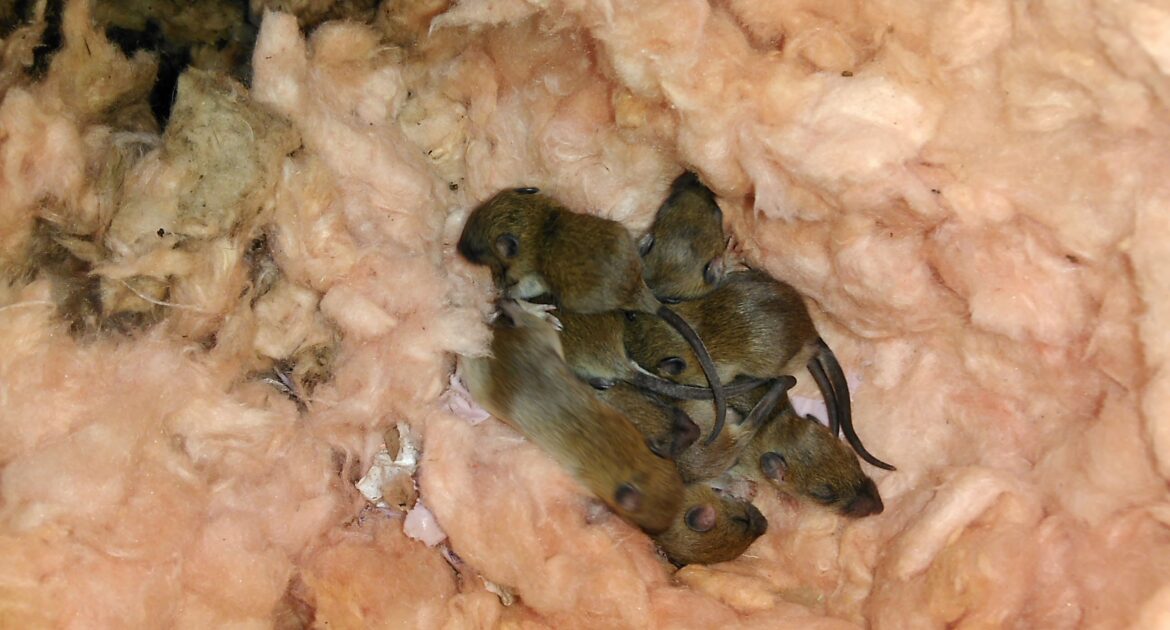Mice look adorable when confined to a cage in the pet store. A mouse running across your living room floor at night? Not so cute. When you need mice removal in Pickering, hiring Skedaddle Humane Wildlife Control is a great solution. We are rodent removal experts who can put a stop to your infestation. But what’s living in your walls? Mice and rats are different creatures, and they need to be dealt with differently. To help us help you, learn about what’s living in your walls. Identify your infestation with these 5 key differences of mice vs rats.
1. Size
The easiest way to tell rats and mice apart is their appearance. Rats are much larger than mice. The average mouse is around 12-20 cm, while the average rat is twice that size. If you don’t have a ruler handy take a look at their tails. Rats have thick, relatively short and naked tails. Mice, on the other hand, have long, furry and skinny tails.
2. Sounds
It’s difficult to distinguish these rodents by sound alone, but not impossible. If you have rodents in your house, you may hear scratching or chewing. Either will scurry through your walls at night when the house is quiet. The big difference between them is how they talk to their own kind. Mice squeak, while rats communicate using sounds inaudible to humans. If you hear squeaking, you can be fairly sure you’ve got mice on your hands.
3. Diet
These pests aren’t picky eaters, but they do have preferences. Mice are health enthusiasts and typically go for veggies, fruits, grains and nuts. Cartoons don’t have it all wrong though. Mice will still eat cheese if that’s what they’re able to find. Rats prefer to eat proteins like meat, fish, and yes: cheese. Maybe cartoons weren’t that far off after all!

4. Behaviour
Since both are nocturnal observing their behaviour can be difficult. The differences are nonetheless important when it comes to catching them. Mice are very inquisitive, while rats are more tentative. Mice are more likely to investigate a new situation. If they’ve never seen it before, they want to check it out. Rats will avoid unfamiliar things. As a result, trapping methods for these critters vary quite a bit.
5. Lifespan
Rats live about 1-2 years in the wild. Mice only survive about 12-18 months. This short lifespan means your problem is short-lived, right? Not true. These animals reproduce at an alarming rate. If they aren’t eradicated quickly you could be dealing with generations of vermin. Mice can give birth to 14 pups, up to 10 times per year. A potential of 140 squeaky bundles of joy living in your home. New mice can begin to reproduce when they’re about 4-7 weeks old. I won’t do the resulting math for you. You get it; it’s a lot of mice. Rats also breed very quickly. In one year, a rat could give birth to 72 bouncing baby rats. Rat babies only need to reach 9 weeks of age to start reproducing. The lesson here? Both of these rodents need to be dealt with quickly.
Identify and Wave Goodbye
Rats and mice may seem similar, but they are quite different creatures. Mice and rats have different behaviours, appearance, and dietary preferences. When eliminating these pests, identification is key. When you notice rodents in your home take notes. Pest removal is important for the health and safety of your family. Always call an expert when dealing with wildlife in your home.
If rodents have taken up residence, contact us at Skedaddle Humane Wildlife Control. We are trained experts who can quickly and safely remove these pests from your home. Identify your pests, call us, and wave goodbye to your rodent problem!




